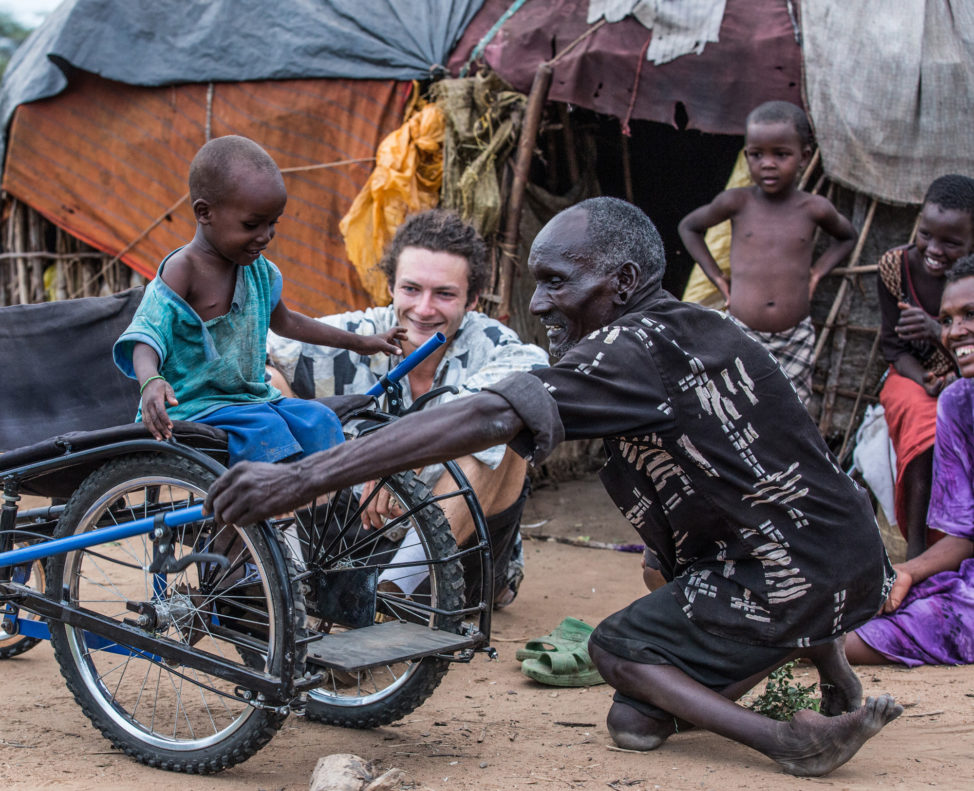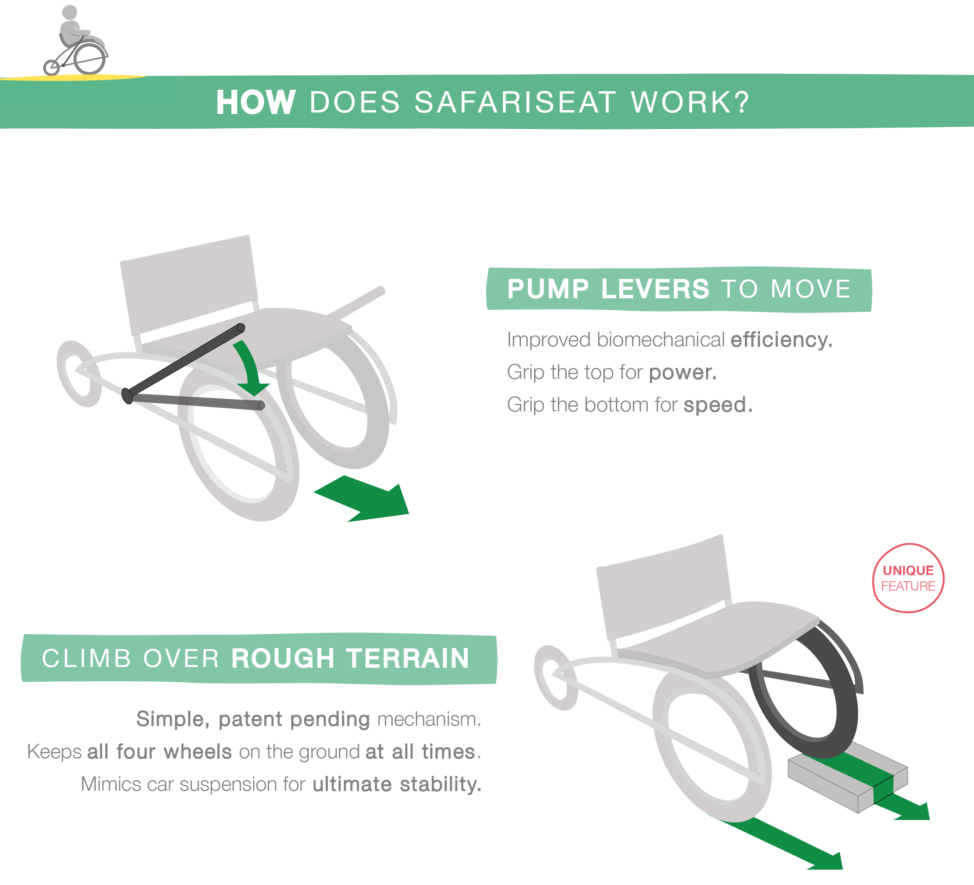
Letu (R), who was disabled by polio and the inspiration for SafariSeat, shows his son Sabato how to use the wheelchair in Kenya. (Janna Deeble)
An idea that first saw light in 2015 is about to become reality. Back then, designer Janna Deeble, who grew up in Kenya, found out just how hard it is for people with disabilities to move around in remote regions with no roads, health care, or wheelchairs. His answer was SafariSeat, an all-terrain wheelchair that goes into production this month.
Techtonics connected with Deeble and Bertie Meyer, co-founders of SafariSeat, via email to learn more about the project.
Q. What is SafariSeat?
JD/BM: SafariSeat is a low cost, all-terrain and open-source wheelchair for people in developing countries. It uses a simple, patented mechanism that mimics car suspension, ensuring all four wheels remain on the ground for maximum stability. It can be made in local workshops using bicycle parts, which means it’s easy to repair.
… SafariSeat is the first project from Uji, a social enterprise company determined to make a difference. Their goal is to design tools that help people break free from the poverty cycle. The Uji philosophy is to help people help themselves – to avoid a culture of dependency by operating on open-source principles.
Q. What inspired this project?
JD/BM: SafariSeat designer, Janna Deeble, grew up in Kenya. He was a child when he first met Letu, a Samburu man disabled by polio, living an isolated, traditional lifestyle with his family in the wilderness.
Letu had been disabled since birth, with no access to healthcare, suitable wheelchairs or any of the assistance much of the world takes for granted. To move, Letu had to crawl; he was totally dependent on others.
Janna didn’t understand the reality of Letu’s situation until, as a design student, he had an accident that left him wheelchair-bound for months. As his independence disappeared, he thought of Letu and his daily struggle to fulfill life’s basic needs. Janna returned to Kenya in 2015 to develop SafariSeat.
Q. Which parts of the world will this product target?
JD/BM: SafariSeat is primarily aimed at people in developing countries where average income is low, the terrain is rough, and often disabled individuals are left behind. However, we have plans to expand into both countries suffering from war and eventually into more developed countries such as the UK.
Q. Isn’t there any other product that already meets these needs at the moment?
JD/BM: There are a number of other wheelchairs designed for developing countries [see GRIT and Motivation]. These chairs both have extremely good designs and have done well. However, what makes SafariSeat unique is its stability and open-source aspect.
Other designs have used three-wheeled trike designs which are good for long distance traveling, but lack stability over rough ground. Our open-source approach is designed to allow anyone, anywhere in the world to make SafariSeat for their local community, creating both wheelchairs for disabled people and jobs within the local community.
Q. How complicated – and expensive – is it to put together a SafariSeat?
JD/BM: SafariSeat is designed to be low-cost and affordable to local communities. All of the components are built from bike parts and locally-sourced materials. Once finished, the open-source designs will be entirely pictographic and easy to understand. We hope that by doing this, anyone – regardless of language – with basic metal-work skills will be able to take the designs and build a SafariSeat.
Q. How much will the assembled seat sell for?
JD/BM: All of the SafariSeats donated through the Kickstarter campaign [200] will be given away for free through APDK Bombalulu. After this, SafariSeat will cost approximately £130 [a bit over $158] to build.
Workshops around the world who intend to use the designs will be able to set their own prices, but the open-source nature will allow prices to remain low.
Q. When will the SafariSeat be available?
JD/BM: We … hope that SafariSeat will be available globally by mid-2017.

